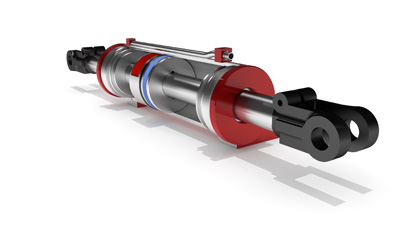Several technologies exist to provide position feedback or data of a cylinder’s position. Linear position sensors convert the position into a proportional analog or digital signal.
LVITs—Linear Variable Inductive Transducers—are contactless position sensing devices, with sensing ranges up to 30 inches or more. Most designs feature an inductive probe surrounded by a conductive tube. This is attached to the moving object to make the reading.
Hall-Effect Transducers use a magnet that communicates with the Hall chips, which then give an output to the internally built microprocessor. The output from the microprocessor is converted to a signal required by the user interface such as voltage, current, PWM or digital output.

An example of Hall-effect linear position sensing technology from Rota Engineering
Using Hall-effect technology on linear position sensors allows manufacturers to make small, compact designs that can be mounted internally or externally to a cylinder. Hall-effect technology is well suited to mobile applications as it is highly resistive to shock and vibration. It is used commonly on steering and depth applications.
LVDTs or Linear Variable-Distance Transducers are durable and resist shock and vibration while offering high repeatability. These absolute linear position/displacement transducers convert a linear displacement into an analog electrical signal. Their design includes transformer coils wound around non-magnetic coils.
Magnetostrictive Transducers measure the distance between a position magnet attached to the component in motion and the head-end of a sensing rod that is attached to axis to be measured. An electronics module sends an analog or digital position reading to a controller or other receiving device.
Linear Encoders are available with resistive, capacitive, optical or magnetic sensing with incremental or absolute position sensing to accurately determine the stroke of the cylinder.
Filed Under: Mobile Hydraulic Tips, Slider